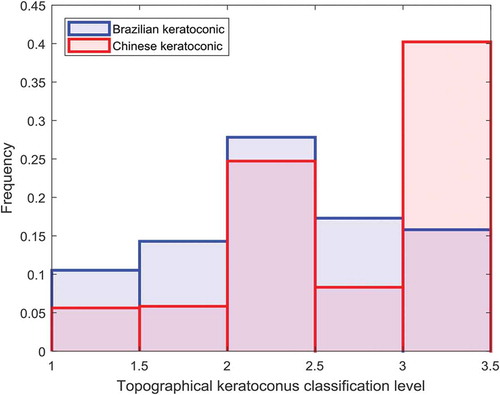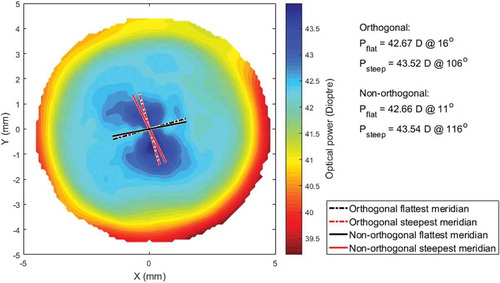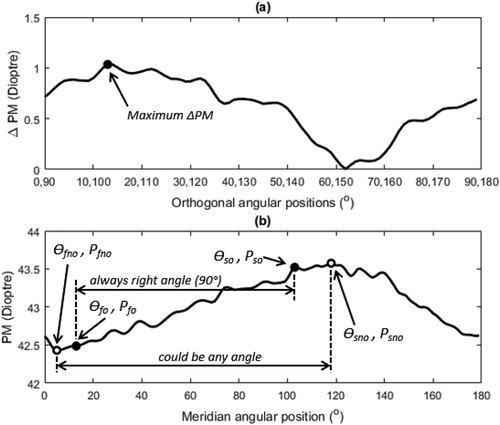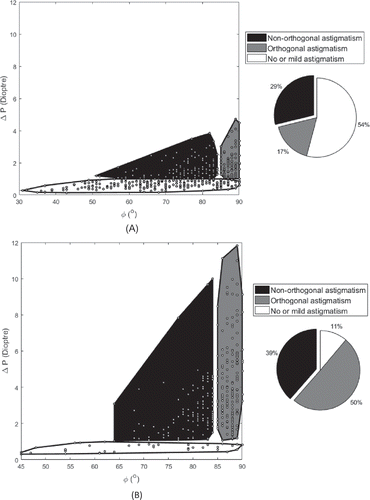Figures & data
Figure 1. Topographical keratoconus classification level for keratoconic patients as identified by the Pentacam HR (unclassified keratoconic cases were 0.14 of Brazilian participants and 0.15 of Chinese participants).

Figure 2. Determination of corneal surface axial radius of curvature (r) in a certain meridional plane. In this method, the center of curvature (c) is always restricted to lay on the cornea’s optical axis.

Figure 3. Optical power map for a left eye of a normal Chinese participant (female 26 years old) based on the axial curvature method. The map shows the orthogonal and non-orthogonal power meridians.

Figure 4. Calculating the position of the flattest and steepest power meridians – Pfo: power of the flattest orthogonal meridian; Өfo: angular position of the flattest orthogonal meridian, Pso: power of the steepest orthogonal meridian, Өso: angular position of the steepest orthogonal meridian, Pfno: power of the flattest non-orthogonal meridian, Өfno: angular position of the flattest non-orthogonal meridian, Psno: power of the steepest non-orthogonal meridian, Өsno: angular position of the steepest non-orthogonal meridian.

Figure 5. Astigmatism based on orthogonal and non-orthogonal power axes analysis among the four populations.

Figure 6. Acute angular difference between the cornea’s flattest and steepest power meridians plotted against the power difference for Brazilian normal (A) and keratoconic (B) participants.

Figure 7. Acute angular difference between the cornea’s flattest and steepest power meridians plotted against the power difference for Chinese normal (A) and keratoconic (B) participants.

Table 1. Clinical data collected for normal and keratoconic eyes.
Table 2. Clinical characteristics of normal and keratoconic eyes as measured by the Pentacam HR system.
Table 3. Acute angle and absolute power difference between steepest and flattest meridians determined for Brazilian and Chinese eyes using orthogonal and non-orthogonal analysis.
